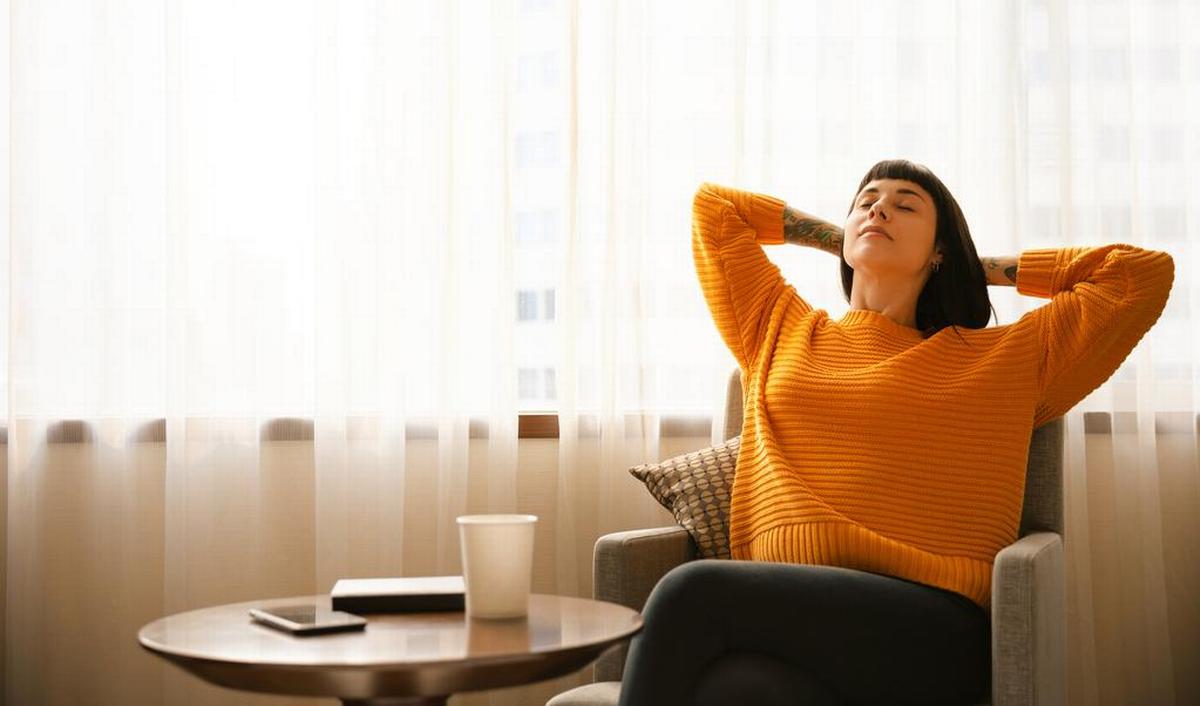In this article
The effect of breathing exercises on migraines
file
Read also: Correct breathing: Heart toning as an answer to stress, fatigue and hyperventilation
|
© Getty Images
“How often do you find yourself holding your breath, tensing your neck and back muscles, or grinding your teeth? These and other stress behaviors can worsen migraine symptoms or even trigger an attack,” says Catherine Geraarts, MD, a cardiac coherence therapist. “By using the right breathing techniques, you can relieve stress as well as headaches.”
Read also: Dysfunctional breathing: What are the symptoms of incorrect breathing?
|
Catherine is the author of Keep Breathing and knows better than anyone how breathing techniques can support your mental and physical health.
Benefits of correct breathing
She says that consciously slowing your breathing leads to various beneficial effects, such as:
- Inducing a calming response in the nervous system.
- Improving the respiratory system through controlled breathing patterns.
- Enhancing activities in the digestive system.
- Relax tense muscle tissue.
- Improving cognitive functions, including absorbing, focusing, and retaining information.
- Stimulate creativity and enhance passion for activities.
Read also: Why is breathing through the nose healthier?
Breathing exercises
Start with breathing exercises on your own. First, make sure you have a quiet, distraction-free place and a comfortable body position. As difficult as it may seem, try to block out your fears and distracting thoughts. Choose an exercise that suits you and is most comfortable for you, and repeat it (at least 20 minutes a day).
- Rhythmic or coherent cardiac breathing:
Be aware of your breathing (rhythm and breathing)
Drop your shoulders
Slow down your breathing
Slowly count to four as you inhale, then slowly count to six as you exhale.
Notice how your body naturally relaxes as you exhale slowly.
Recognizing this change will help you relax more.
- Visible breathing:
Find a comfortable place where you can close your eyes and combine slow breathing and your imagination.
Imagine that relaxation enters your body and tension leaves your body.
Breathe calmly and in a natural rhythm.
Visualize your breath coming through your nose, entering your lungs, and expanding your chest and abdomen.
Then visualize your breath coming out in the same way.
Continue to breathe, but with each inhale imagine yourself breathing more relaxed. With each exhale, imagine yourself releasing more tension.
- Progressive muscle relaxation:
Turn your thoughts to yourself and your breathing. Take several deep breaths and exhale slowly.
Mentally scan your body. Note the headache you feel, if you have one, and any other areas that feel tense or cramping.
Loosen these areas. Release as much stress as possible.
Smoothly turn your head in a circular motion once or twice. (Stop any movement that causes pain!)
Move your shoulders forward and back several times. Let all your muscles completely relax.
Conjure up a pleasant thought for a few seconds. Take another deep breath and exhale slowly.
You should feel more comfortable now.
Read also: Breathing exercise against stress

“Coffee buff. Twitter fanatic. Tv practitioner. Social media advocate. Pop culture ninja.”











More Stories
Which can cause an increase in nitrogen.
The Central State Real Estate Agency has no additional space to accommodate Ukrainians.
The oystercatcher, the “unlucky national bird,” is increasingly breeding on rooftops.